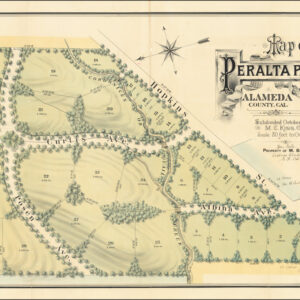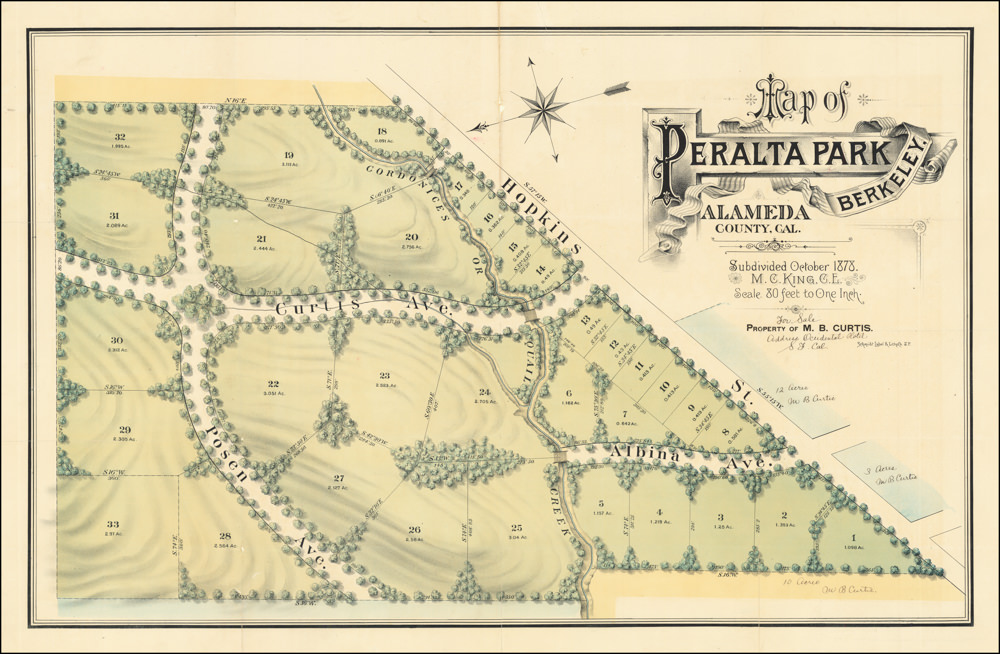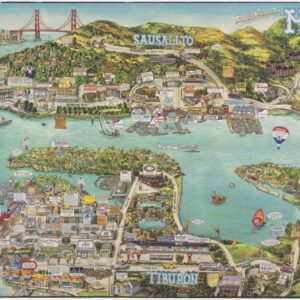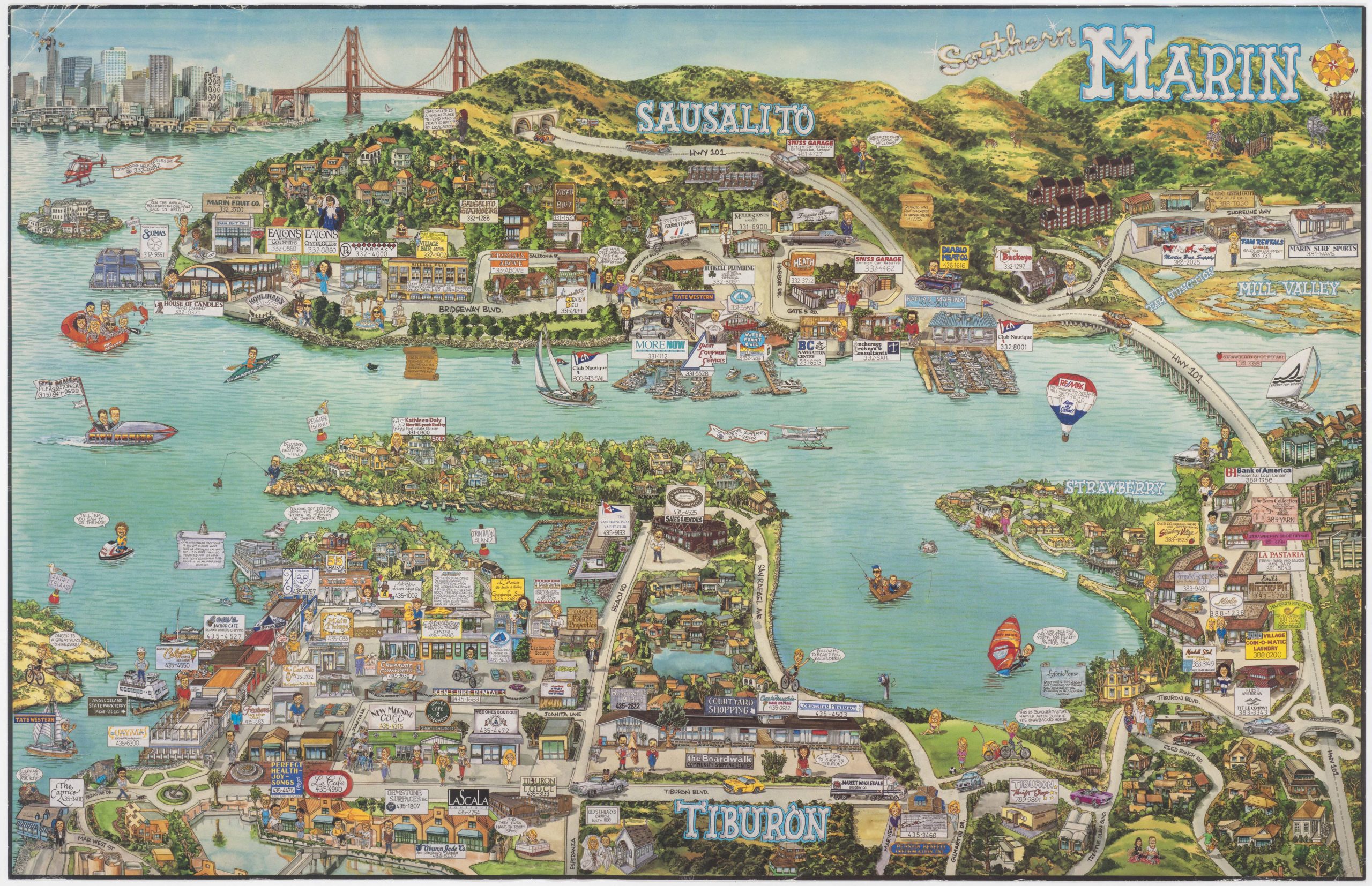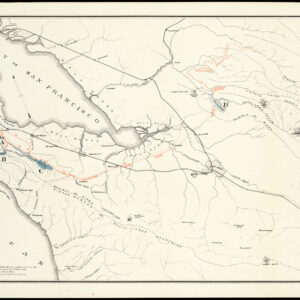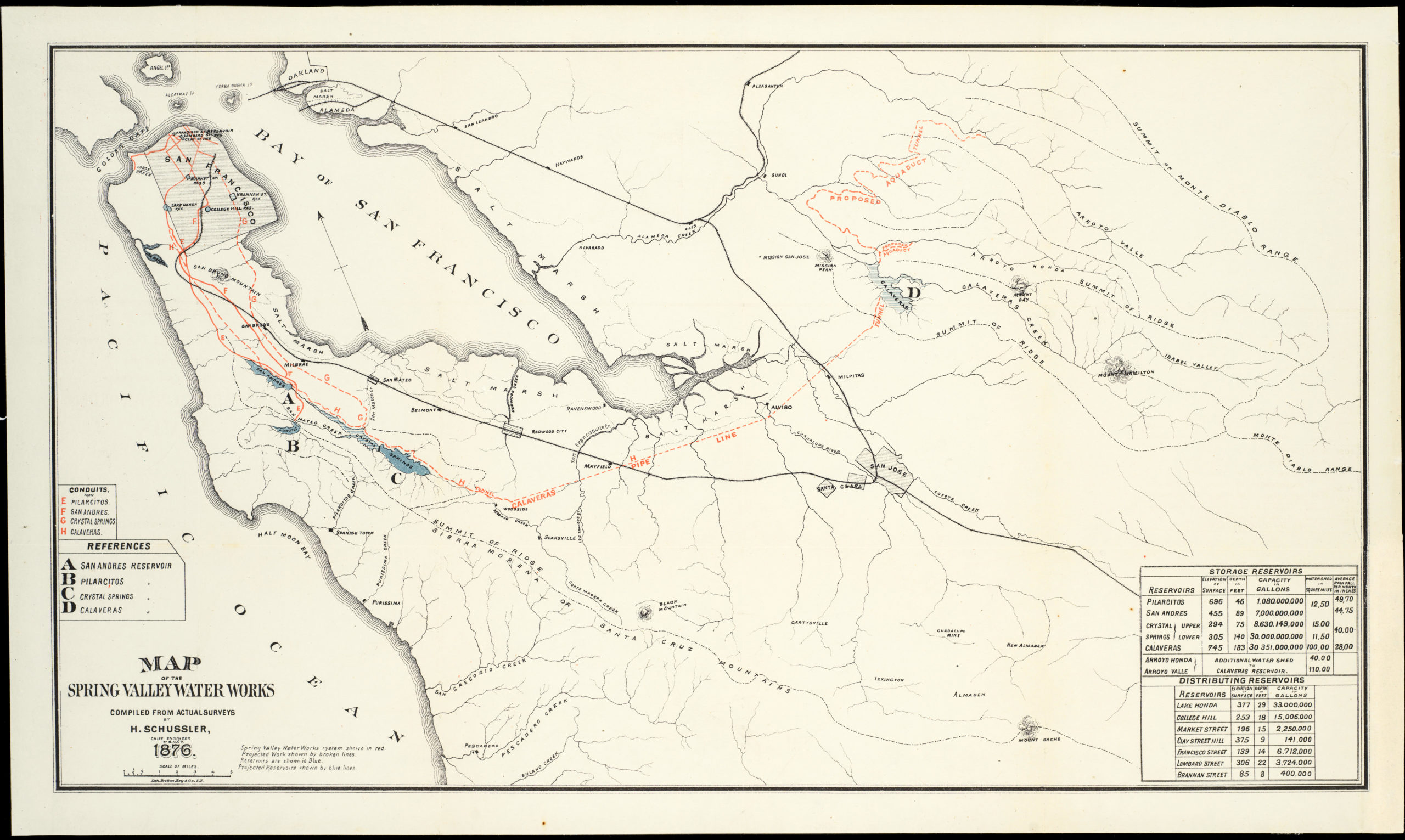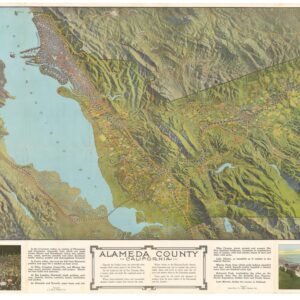An unrecorded 1928 Wells & Fargo promotional map showing important people, places, and events in California history.
Being a map of central California, showing some of the people, places and events that had to do with our early days. Wells Fargo Bank & Union Trust Co., San Francisco, Established 76 years ago, in 1852
$1,200
1 in stock
Description
This unrecorded pictorial map captures Northern California’s geography and history in a most unusual manner. It was produced as a wood-block or lino-cut print and not as a lithograph or off-set print as was standard at the time. The orientation has east at the top, so we find San Francisco Bay positioned at the bottom of the map, with Sacramento located more or less at the top. The mapmakers have endowed the composition with vignettes and text boxes that tell the story of how early pioneers and gold seekers settled and transformed this region.
The map is a simple bi-chrome print, with bright yellow and sharp black being the only printed colors, and the white of the paper is used efficiently as contrasting space. Nevertheless, despite its simple color composition, the mapmakers have effectively used nuance and color depth so that the composition stands out and actively engages the viewer. The map is a testimony to those formative years of California history in which gold and prospecting defined most everything and an excellent example of how, already in the 1920s, selective takes on history were used for marketing and branding purposes. This practice is, of course, still very much in use today.
Many people and places featured on the map have achieved an almost iconic status in American history. At the top is an inset map depicting the cross-country route of the Pony Express. The importance of this early communication and mail route is exemplified by the story of Lincoln’s 1861 inaugural address, which supposedly reached California via a Pony Express rider in just over seven days. The mapmakers also highlight stories of the first pioneers. We see a vignette depicting Sutter’s Fort, which was the nexus of the first prospectors and later became the site of the state’s capital. More infamous stories, like the fate of the Donner Party, are also illustrated on the map, although the text mentions only that they cooked and ate their shoes while caught in the mountain snows during Christmas of 1846, not the macabre reality.
Among the most important themes of the map is the pivotal role played by stage coaches in transporting the large amounts of gold found in Northern California to urban markets. The composition’s narrative hinges on stories of infrastructure and initiative associated with the California gold finds. Wells Fargo began in this service, providing armed stage coaches for the perilous land journey. Precisely such a stagecoach is seen at the top of the poster, whereas the founders of the company, Henry Wells and William G. Fargo, are depicted in the lower left, just above San Pablo Bay.
Even in the competent hands of Well Fargo, danger was lurking everywhere. Among the most palpable threats were highwaymen or so-called road agents, which held up stage coaches and alleviated them of their heavy burden. A key figure in this regard was Black Bart, who held up at least 28 stage coaches, which landed a bounty of $20,000 on his head.
Coaches were not the only device implemented to transport gold. On the Sacramento River, we find an image of the so-called ‘side-wheelers’: steamships sailing between San Francisco and Sacramento/Neue Helvetia. These would carry gold from the Sierra Nevadas to San Francisco, miners, and fresh supplies on the return journey. A note stresses that these vessels were used by the Pony Express for that last crucial leg of the journey.
Other themes also relate to gold but relay more profound stories of California’s history. Chinese miners are noted as successful ‘cleaners’ of mining sites long abandoned by less patient European or American prospectors. Images of San Francisco include a view of the city on the Bay and depictions of the Wells Fargo Bank’s interior, which was equipped with the most precise gold scales on the market. Sometimes unrelated but nationally important events are shrewdly linked to the bank, as in the image in the lower right corner, in which a torch-light parade associated with Lincoln’s first election passes by the imposing Wells Fargo building on Montgomery Street.
Census
No examples of this map are listed in the OCLC.
Despite being quite prolific in their output for almost two decades, printed material from the Patterson & Sullivan Company is extremely rare on the market. The reason for this is their products’ commercial or promotional nature, most of which have not survived. Extensive database searches reveal that very few Patterson & Sullivan products are listed among institutional holdings. The California Historical Society holds a single map entitled “Views of the Town and Harbour of San Francisco,” issued in 1937 (no. 00028391). However, we have not been able to locate any other printed materials from Patterson & Sullivan in their holdings, just as Calisphere.org and the OCLC have no listings.
This lack of records does not mean material does not exist. A blog post showing examples of printed artwork by Patterson & Sullivan can be found here: http://todaysinspiration.blogspot.com/2007/08/patterson-sullivan.html . Moreover, in 2007, Illustration Magazine featured an article about the Patterson & Sullivan firm written by the company’s current owner and shows some the archival material they still hold.
Cartographer(s):
Patterson & Sullivan (1921-1939) was an art and printing company based in San Francisco during the 1920s and 1930s. It was founded by J.E. Patterson and Ray Sullivan in 1921. The duo worked largely as commercial illustrators, using their skills to create striking visuals for advertising and promotion.
In addition to artistic services, Patterson & Sullivan were renowned for their graphic designers and also employed typographers, calligraphers, and photographers. Among their many important California clients, we find companies like Southern Pacific Railroad, Dole Food Company, the Del Monte Corporation, Levi Strauss & Co., Stanford University, and Standard Oil.
In 1939, P&S changed both ownership status and name. The company continues to exist today as P&H Creative Group, owned by Bruce Hettema.
Condition Description
Tiny nick at the upper left edge; fine or nearly so.
References
